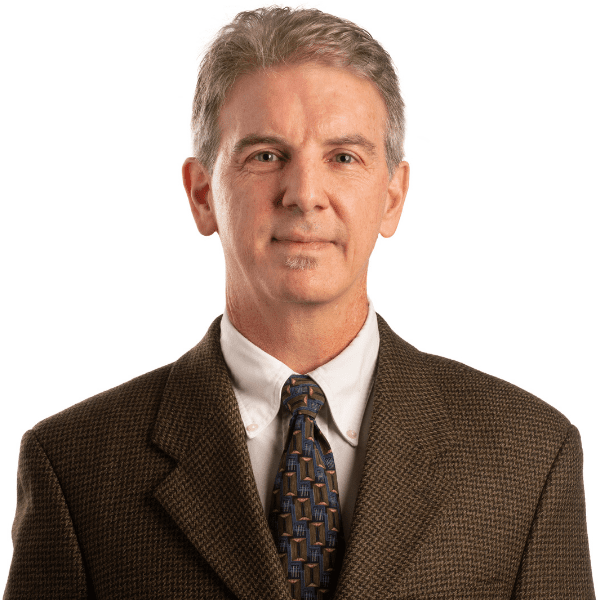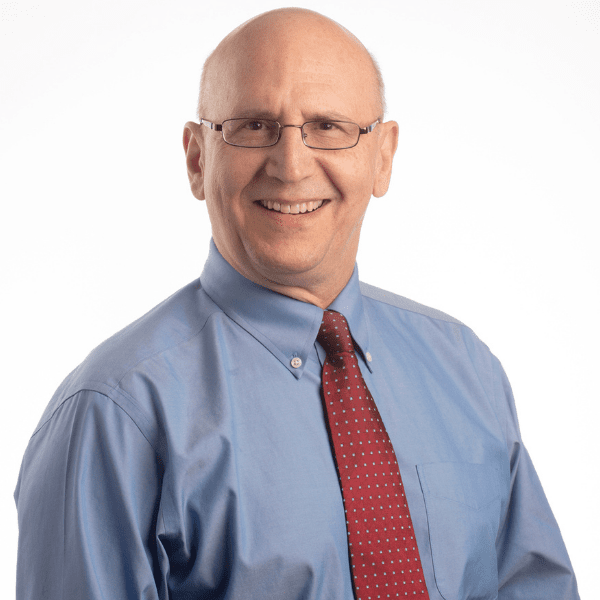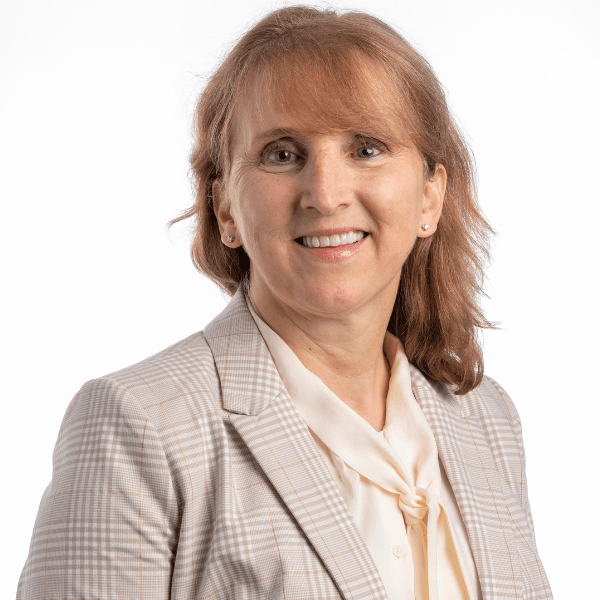The College of Medicine has announced four inaugural “Creativity Hubs” to grow collaborative and thematic research programs with a boost of $300,000 in seed funding over the next 18 months. We invited the leaders of the four hubs to share their group’s strengths and goals, insights on collaboration and more through Q&A interviews conducted by email. For more information on this initiative, read the main story here. Congratulations to these hub leaders and their colleagues!
Neurodegenerative Diseases
Q&A with Creativity Hub Co-Leaders Steven Barger, Ph.D., and Paul Drew, Ph.D.
Please comment on being selected as a Creativity Hub.

Dr. Barger: The application I submitted was somewhat specific for brain disorders related to Alzheimer’s disease. The review panel supported combining that with a proposal by Dr. Drew to support research into a broader array of brain disorders. And I think that exemplifies the unifying nature of the Creativity Hub initiative – it is inclusive and collaborative. The projects I felt were important to support have objectives and needs that are shared with others in the College of Medicine that seek to understand the fundamental underpinnings of neurodegeneration.

Dr. Drew: It is a great honor to be selected as an inaugural Creativity Hub. I look forward to working with my friend and colleague Dr. Steve Barger to advance research at UAMS concerning neurodegenerative diseases including Alzheimer’s disease.
Why is this hub’s focus of research so important?
Dr. Barger: “Neurodegeneration” is a term that is not widely known to the broader public, but it may be self-explanatory. This refers to disorders in which the brain or other parts of the nervous system are degraded over time, both in structure and function. Most of these diseases are progressive—once started, they continue to get worse over time. As one might expect, they tend to depend somewhat on one’s age. Alzheimer’s disease is one of the most common—the fourth leading cause of death among American adults—but others are no less tragic. It is generally recognized that our brains are what make humans special, and neurodegeneration erodes the specialness that defines the individuals who are important in our lives, as well as the collective potential of the entire human family.
Dr. Drew: Neurodegenerative diseases affect millions of people and have devastating personal and societal consequences. These diseases more commonly occur in adults and elderly individuals, and the incidence of these diseases has increased dramatically as lifespan has increased. There are limited treatment options for most neurodegenerative disorders, and thus it is critical that basic science and clinical researchers collaborate to develop novel therapies.
How will the funding and establishment of the hub boost/accelerate the work that is being done in this area?
Dr. Barger: UAMS has a strong tradition of research and treatment for neurodegenerative disorders. But tradition is easily modified by the changing nature of our funding sources, our workforce, and even the factors that initiate disease. In a word, it boils down to “entropy,” a term that reflects the tendency of organized efforts to become disorganized over time. A fundamental property of entropy is that it can only be overcome with energy. So, it is critical that we respond to the changing nature of medicine energetically. Financial resources are energy, pure and simple. This funding will ensure that we not only maintain traditional strengths but also create new paths of progress through previously unseen opportunities to collaborate. We will learn from each other and pool resources. More specifically, establishment of the hub means that contributions from every member will support the reinvigoration of research expertise in ALS (“Lou Gehrig’s disease”), the renewal of a NIH Program Project Grant on Alzheimer’s, a concrete research effort to support our Movement Disorders Clinic, and greater interaction between neurobiologists and the Psychiatric Research Institute.
Dr. Drew: Creativity Hub funding is expected to increase extramural grant funding including interdisciplinary collaborative grants and programmatic grants. Funding will also increase collaborative research between basic science and clinical researchers. Furthermore, the funding will facilitate career development and mentoring programs for neurodegeneration researchers including students, post-doctoral fellows, and junior faculty.
Please comment on the caliber of the UAMS researchers currently working in this area.
Dr. Barger: One of the requirements in the application for a Creativity Hub was documentation of the expertise and accomplishments of the principal human components. This group comprises individuals who have been leaders in their fields throughout their careers. The university’s research office recently made note of the UAMS researchers who were included in a recent ranking of the top 2% of research scientists across all time and geography. Nearly a fifth of those elite individuals from UAMS will be included in the Neurodegeneration Creativity Hub. Sue Griffin, Ph.D., was given the Alzheimer’s Association’s Lifetime Achievement Award. Gwen Childs, Ph.D., received the George Gomori Award, which amounts to recognition by the national Histochemical Society of their top scientist only once every four years. Lee Archer, M.D., was selected by the National Multiple Sclerosis Society for the prestigious designation as “Partner in MS Care.” Dr. Bill Slikker was awarded the Mildred S. Christian Career Achievement Award by the Academy of Toxicological Sciences and the George H. Scott Memorial Award from the Toxicology Forum. Many among our team are or have been officers in national and international scientific organizations, chairs of NIH review panels, and on the editorial boards of major scientific publications. It is also significant that many of the hub’s faculty have been mentors of students who have won their own awards. Furtherance of research education and career advancement will be an important goal of the hub.
Dr. Drew: Neurodegeneration research has traditionally been a strength at UAMS including a program project on Alzheimer’s disease which has been continuously funded for over two decades. There is also excellent research concerning multiple sclerosis, ALS, Parkinson’s disease and stroke at UAMS. Traditionally, these research teams have largely worked independently, and it is hoped that the Creativity Hub will bring these researchers together to more effectively advance our understanding of neurodegenerative diseases.
What is the importance of interdisciplinary collaboration?
Dr. Barger: Like most aspects of life, biomedical research is getting increasingly specialized. This is largely just a natural outcome of technological and conceptual sophistication. As knowledge and methodology advance, they get divided into more and more numerous components. So, we researchers get deeper and deeper into the granular details of our subfields. It is important to step back and look at the problem from a broader perspective. This is true for the conceptual framework on which the research is hung. And, it is also true in a technical sense. Sometimes, interdisciplinary collaboration will reveal an appropriate methodology that would not have been recognized without the views and experiences of colleagues in diverse fields.
I would also like to emphasize the potential for the Creativity Hub initiative to enhance diversity and inclusion. This was a stated objective in the announcement of the program, and I am gratified that components focused on mentoring the next generation of researchers will include active and intentional efforts to overcome the hurdles and stumbling blocks that have traditionally excluded certain classes and groups of people. Among other dividends, this should facilitate the development of research into a wider array of health concerns, to the benefit of all Arkansans.
Dr. Drew: As noted earlier, the breadth and magnitude of neurodegenerative diseases and fact that there are only limited therapies for most neurodegenerative diseases makes it imperative for basic science and clinical researchers to work together to develop new and better treatments as expeditiously as possible.
Musculoskeletal Health & Disease
Q&A with Creativity Hub Leader Teresita Bellido, Ph.D.
Please comment on being selected as a Creativity Hub.

On behalf of UAMS musculoskeletal investigators and professionals, I feel honored and gratified that the Musculoskeletal Creativity Hub was selected by Dean Smyth for funding. This fact is particularly humbling knowing that 23 proposals by excellent research groups at UAMS were submitted and only four were selected for funding.
Why is this hub’s focus of research so important?
Diseases like osteoporosis, osteoarthritis, developmental skeletal abnormalities, poor nutrition, and cancer – such as multiple myeloma and breast cancer – negatively impact the skeleton. There is an unmet need to better understand the causes of these diseases to support the development of more effective prevention strategies and therapies. To address this need, UAMS has supported research in the musculoskeletal field for the last 20 years, including recent recruitments, and UAMS researchers are well funded by the NIH, the VA, USDA, and other sources. As a consequence, this is already a key signature area for which UAMS is nationally and internationally recognized.
How will the funding and establishment of the hub boost/accelerate the work that is being done in this area?
We identified key areas for investment that will take advantage of the existing strengths to promote synergy between, and expand the abilities of, existing programs. Our vision is to capitalize on the UAMS investment and the success of musculoskeletal investigators by strengthening focus areas that will enhance the recognition of UAMS as well as promote interaction between musculoskeletal investigators and those involved in cancer research (another key signature area at UAMS) and with investigators at the Arkansas Children’s Nutrition Center (ACNC) at Arkansas Children’s. These efforts will also increase the opportunities to recruit new investigators to UAMS, retain talent within the state, and increase diversity. Our goals are in sync with the 2029 UAMS vision plan developed by the UAMS Chancellor and the Provost.
Please comment on the caliber of the UAMS researchers currently working in this area.
UAMS researchers are among the most outstanding investigators in the musculoskeletal field. The Division of Endocrinology, Department of Internal Medicine, is represented by its Division Director, Elena Ambrogini, M.D., Ph.D., as well as Charles O’Brien, Ph.D., Director of the Center for Musculoskeletal Disease Research, which is supported by a NIH Centers of Biomedical Research Excellence (COBRE) grant. This group of investigators carries on the vision of the UAMS and VA Center for Osteoporosis and Metabolic Bone Diseases, which was funded under the leadership of Stavros Manolagas, M.D., Ph.D., starting more than two decades ago. C. Lowry Barnes, M.D., and David Bumpass, M.D., Chair and Vice-Chair of Research, respectively, of the Department of Orthopaedic Surgery, are committed to enhancing research in orthopedics at UAMS and actively interact with other UAMS departments. I am past president of the American Society for Bone and Mineral Research, and since my recruitment and return to UAMS as Chair of Physiology and Cell Biology in 2020, I have increased the emphasis on musculoskeletal research, making it one of our department’s research signatures. Mario Ferruzzi, Ph.D., who was recruited in 2021 as Director of the Arkansas Children’s Nutrition Center and a Professor in the Department of Pediatrics, is committed to interacting with other UAMS departments. Drs. Ambrogini, O’Brien and I are also VA investigators, providing a solid foundation to the planned expansion of musculoskeletal research supported by the VA in the next few years.
What is the importance of interdisciplinary collaboration?
The goal is to accelerate the synergism among the departments of Physiology and Cell Biology, Medicine/Endocrinology, Orthopaedic Surgery, and the Cancer Institute (CI) at UAMS; enhance the UAMS and Central Arkansas Veterans Healthcare System (CAVHS) relationship; initiate collaborations with the Arkansas Children Nutrition Center; and expand collaborations with investigators at the University of Arkansas at Fayetteville. The following research areas will constitute the major focus of these efforts: bone and cancer; bone pathophysiology; and regulation of bone and muscle over the lifespan by nutrition and physical activity.
Lifespan Research to Improve Cardiometabolic Health
Q&A with Creativity Hub Leader Elisabet Borsheim, Ph.D.
Please comment on being selected as a Creativity Hub.

This is a very exciting opportunity to initiate a strong life course program at UAMS in collaboration with Arkansas Children’s focusing on improving cardiometabolic health.
Why is this hub’s focus of research so important?
Heart disease is the leading cause of death in Arkansas and in the U.S. as a whole. Known risk factors for heart disease in adults include high blood pressure, diabetes, smoking, obesity, suboptimal diet, and physical inactivity. Early life exposure can impact health and disease across the life course. Understanding early-life factors and their relations to trajectories of cardiometabolic health can help us develop effective and strategic interventions directed towards critical time periods to prevent cardiometabolic disease.
How will the funding and establishment of the hub boost/accelerate the work that is being done in this area?
The funding will bring together researchers at the Arkansas Children’s Nutrition Center, the Arkansas Children’s Research Institute, and at the UAMS campus, who work along a spectrum from pre-pregnancy, gestation, childhood, adolescents, young adults, and older adults. Thus, it will bridge research in pediatrics and geriatrics. The funding will help kickstart unique teamwork on lifespan/healthspan research, including initiating infrastructure to facilitate such collaborations. It is expected that the work will lead to training of new diverse investigators in the field, and to collaborative research publications and grants for further expansion of the team’s work.
Please comment on the caliber of the UAMS researchers currently working in this area.
The team consists of senior, early- and mid-career investigators. Several of the senior team members are listed in the recent study from Stanford University ranking the top 2% most influential researchers, highlighting the expertise and strong mentoring potential within the team. Additional team members are from the Department of Pediatrics, Arkansas Children’s Nutrition Center (ACNC), and/or Arkansas Children’s Research Institute: Aline Andres, Ph.D., R.D., Professor (Associate Director ACNC); Eva. C. Diaz, M.D., Assistant Professor; Mario Ferruzzi, Ph.D., Professor (ACNC Center Director; Section Chief Developmental Nutrition); Craig Porter, Ph.D., Associate Professor; Elijah Bolin, M.D., Associate Professor; Emir Tas, M.D., Assistant Professor, Keshari Thakali, Ph.D., Assistant Professor; from the Department of Family and Preventive Medicine: Taren Swindle, Ph.D., Associate Professor (also ACNC); and from the Department of Geriatrics/ Reynolds Institute on Aging: Jeannie Wei, M.D., Ph.D. (Chair); Robert R. Wolfe, Ph.D., Professor; Arny Ferrando, Ph.D., Professor; Gohar Azhar, M.D., Professor.
What is the importance of interdisciplinary collaboration?
Interdisciplinary collaboration is mutually beneficial for team members and enhances outcomes. Our Hub includes basic, clinical and implementation scientists. Such collaboration enables evaluation of the clinical and applied value of the research, ensuring high significance.
Artificial Intelligence (AI) for Health
Q&A with Creativity Hub Leader Fred Prior, Ph.D.
Please comment on being selected as a Creativity Hub.

We were surprised to be selected given all of the excellent proposals and very pleased.
Why is this hub’s focus of research so important?
Artificial Intelligence is being embedded into almost everything we deal with – from TV sets to cars. It has already made a major impact on biomedical research and is beginning to be felt in the clinic. UAMS needs to be prepared to wisely choose appropriate tools and to use them knowledgably. We need to pool our knowledge and expertise and grow resources and skills in this space. AI is a train that already left the station. We need to be on board and helping to select the next destinations.
How will the funding and establishment of the hub boost/accelerate the work that is being done in this area?
The funding will help us to establish a framework for future research, future grant funding and the capability to guide integration of new tools into clinical practice. We plan to not only build capacity at UAMS, but to reach out across the state to build collaborations and to provide training opportunities to focus attention on medical applications of AI. We plan to leverage this work in the informatics component of the CTSA grant renewal next year.
Please comment on the caliber of the UAMS researchers currently working in this area.
We have an excellent team drawn from both clinical and basic science departments with many hub members also serving in the Translational Research Institute, the Winthrop P. Rockefeller Cancer Institute, and the Institute for Digital Health and Innovation (IDHI). Joining me from the Department of Biomedical Informatics are Vice Chair and Professor Mathias Brochhausen, Ph.D.; David Ussery, Ph.D., Professor; Intawat Nookaew, Ph.D., Associate Professor; Horacio Gomez-Acevedo, Ph.D., Associate Professor; Galina Glazko, Ph.D., Associate Professor; Jonathan Bona, Ph.D., Assistant Professor; Michael Robeson, Ph.D., Assistant Professor; Yasir Rahmatallah, Ph.D., Assistant Professor; and Christopher Wardell, Ph.D., Assistant Professor. Joseph Sanford, M.D., Associate Professor of Anesthesiology and Biomedical Informatics, serves as Associate Vice Chancellor, Chief Clinical Informatics Officer and Director of IDHI. Kevin Sexton, M.D., Associate Professor of Surgery and Biomedical Informatics, is Associate Chief Medical Officer, Associate Director of IDHI, and Associate Chief Clinical Informatics Officer for Innovation, Research and Entrepreneurship. Jonathan Laryea, M.D., is Professor of and Chief of the Division of Colon and Rectal Surgery and Medical Director of the Cancer Service Line in the Cancer Institute. Dr. Grover Miller is a Professor in the Department of Biochemistry and Molecular Biology.
What is the importance of interdisciplinary collaboration?
This is very definitely a team sport. We see AI and in particular machine learning as a critical research tool with broad applicability.
